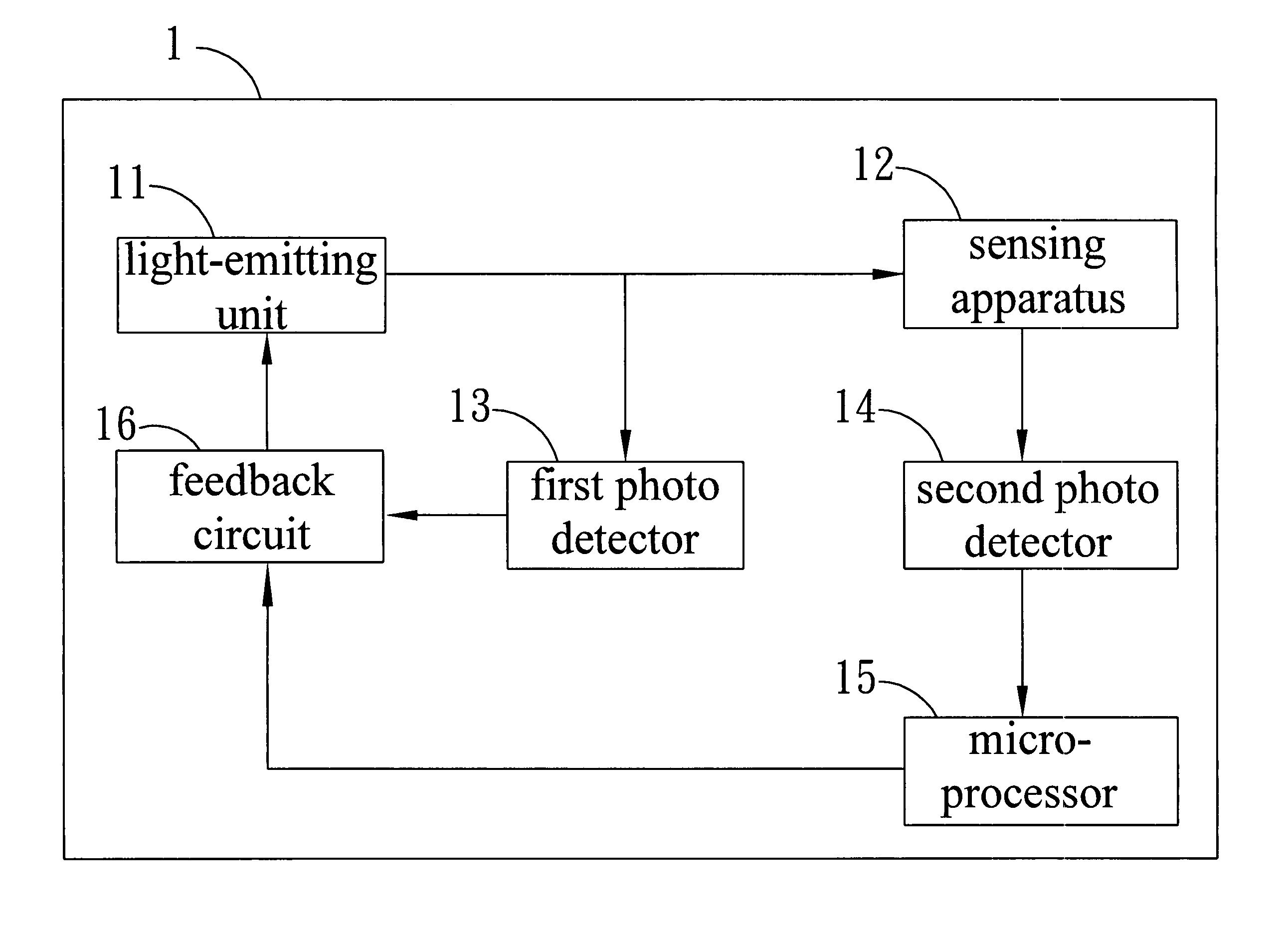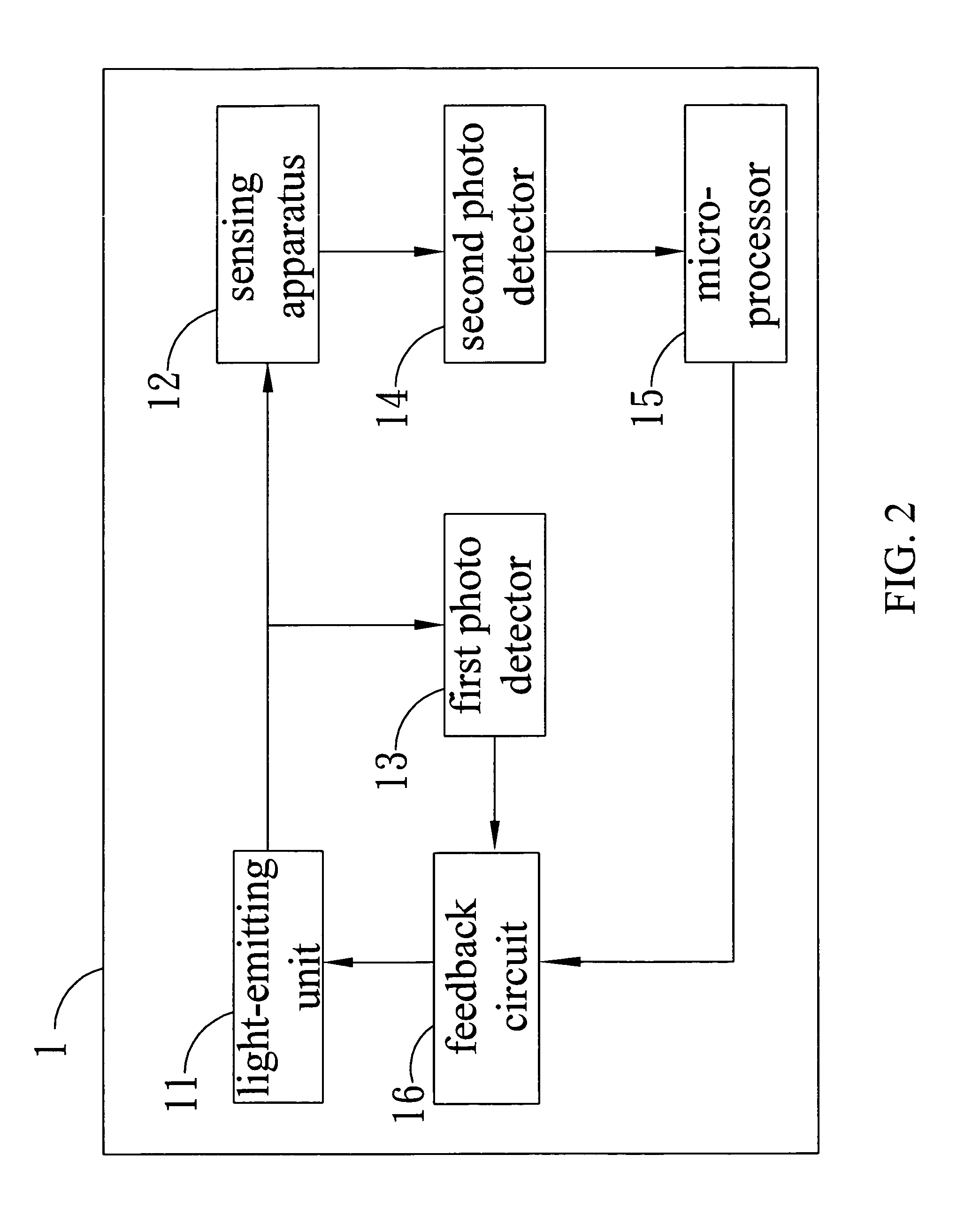Photoelectric feedback sensing system having a sensing apparatus outputting a light signal corresponding to a characteristic of a sample within the sensing apparatus
a technology of light signal and sensing apparatus, which is applied in the field of photoelectric feedback sensing system, can solve the problems of inability to distinguish whether a signal changes, inconvenient carrying around, and high cost, and achieves the effects of increasing cost, good luminous flux, and effectively compensating for the influence of temperature changes
- Summary
- Abstract
- Description
- Claims
- Application Information
AI Technical Summary
Benefits of technology
Problems solved by technology
Method used
Image
Examples
first embodiment
[0032]Referring to FIG. 2, there is shown a block diagram of a photoelectrical feedback sensing system according to the present invention. In this figure, the photoelectrical feedback sensing system 1 according to the present invention comprises a light-emitting unit 11, a sensing apparatus 12, a first photo to detector 13, a second photo detector 14, a micro-processor 15 and a feedback circuit 16.
[0033]A first light signal can be emitted from the light-emitting unit 11 to pass through the sensing apparatus 12. A second light signal corresponding to a characteristic of a sample in the sensing apparatus 12 is outputted from the sensing apparatus 12. The light-emitting unit 11 is preferably a light emitting diode (LED). The sensing apparatus 12 preferably comprises a sensing optical fiber in a microfluidic component, and is used for sensing biological or chemical molecules. The sensing apparatus 12 is provided thereon with a noble metal nanoparticle layer comprising a plurality of nob...
second embodiment
[0046]Also referring to FIG. 6, there is shown a diagram of the intensity of the light source of a photoelectrical feedback sensing system with respect to time according to the present invention after feedback. In this figure, the intensity of the first light signal is substantially stable with respect to time, unlike the intensity of the light signal as shown in FIG. 5, which fluctuates with time. The intensity of the light signal has peak-to-peak stability of 0.073% and the relative standard deviation (RSD) of the stability can be kept at 0.022%.
[0047]Referring to FIG. 7, it shows the effect of the solution refractive index on the sensor signal by a second embodiment of a photoelectrical feedback sensing to system according to the present invention. The refractive index of solution changes at different concentrations of sucrose solutions. A diagram of the signal intensity at additions of sucrose solutions of different refractive indexes (FIG. 7A) and the corresponding calibration ...
PUM
 Login to View More
Login to View More Abstract
Description
Claims
Application Information
 Login to View More
Login to View More - R&D
- Intellectual Property
- Life Sciences
- Materials
- Tech Scout
- Unparalleled Data Quality
- Higher Quality Content
- 60% Fewer Hallucinations
Browse by: Latest US Patents, China's latest patents, Technical Efficacy Thesaurus, Application Domain, Technology Topic, Popular Technical Reports.
© 2025 PatSnap. All rights reserved.Legal|Privacy policy|Modern Slavery Act Transparency Statement|Sitemap|About US| Contact US: help@patsnap.com



